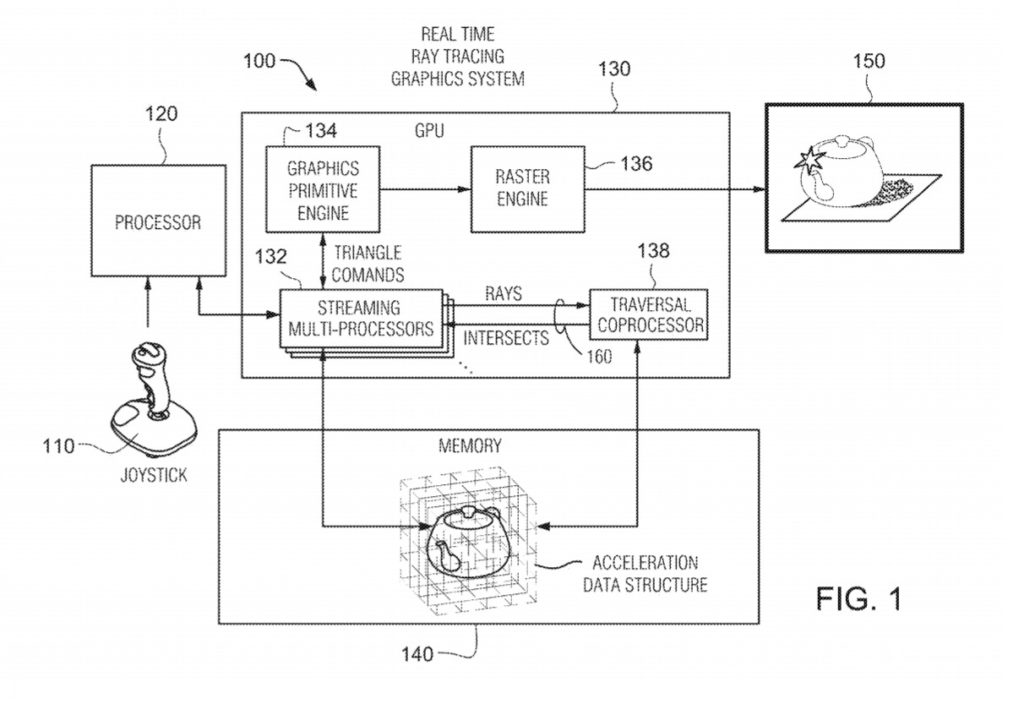
Despite the amount of discussion it’s generated so far, NVIDIA’s new heatsink may not be the RTX 3000 series’ most significant novelty. According to a video by Coreteks (via Wccftech), green team’s upcoming GPUs will sport something extremely interesting: a dual-sided PCB with what’s being described as a “traversal corprocessor.” What this entails is a GPU core on one side, and a second coprocessor on the other. The point of this is improved ray-tracing performance.
Apparently, RTX Cores, which the current series introduced, will now be located in the separate coprocessor, as opposed to being embedded in the primary GPU core. Much of this is still in rumor territory, but as Wccftech points out, NVIDIA did patent traversal coprocessors for better ray tracing just a few years ago. The RTX 3000 series’ offset fan configuration (one fan at the top, one fan on the bottom) also meshes well with the possibility of a dual-sided PCB.

This configuration also makes sense from an economical point of view. “The original approach of setting aside an RTX area on the core GPU die was hard to bin and very wasteful because you had to bin the RTX parts as well and waste precious die space on lower-end customer segments that would not benefit from any negligible raytracing improvement,” explained Wccftech. “Moving the ray-tracing cores onto a new die while keeping the original GPU core pure allows NVIDIA to freely and economically bin chips with almost no waste!”
